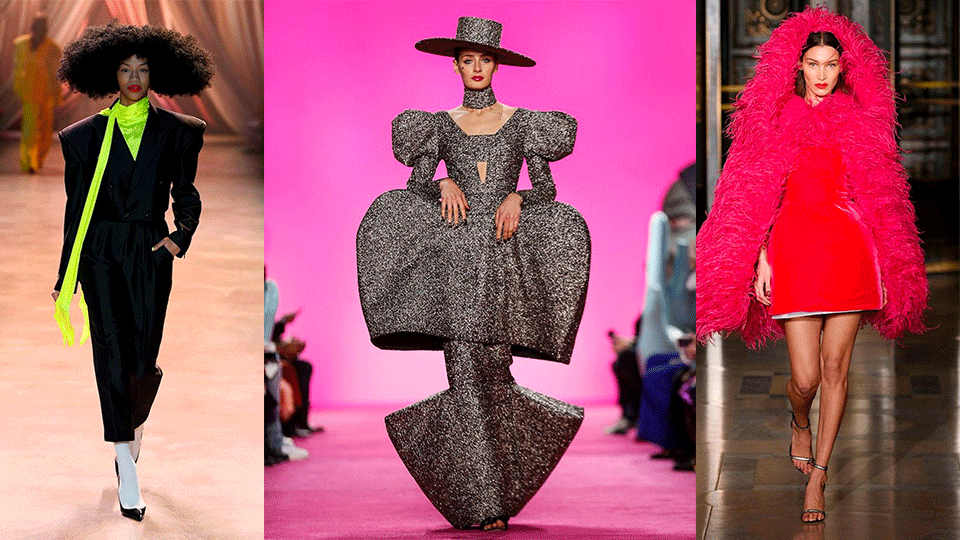- À New Wave to Fashion, À New Way of Living. Download Now on iOS Android Canada SS22
- hello@alahausse.ca
3D Printing: The Solution to Fashion’s Waste Problem?

Lagom: The Swedish Philosophy of Finding Balance
April 9, 2021
Sustainable Fashion: Eco-Friendly Fabrics To Take Into the Spring and Summer
April 16, 2021
Written by: Samantha Mastantuono, Edited by: Sheila Lau
Textile waste is a major issue surrounding the fashion industry that environmentalists are sounding the alarm on, particularly in recent years. Clothing is mass-produced and consumers tend to overconsume, which leads to massive amounts of textile waste. Unfortunately, clothing made from common materials like cotton-polyester blends are extremely hard to recycle into new garments. Current technologies are not advanced enough to recycle pieces made of more than one material source. This is why items like recycled plastic water bottles are more commonly used to construct new clothes. However, 3D printed clothing has been raised as a plausible solution to this fashion waste problem, so let’s look into it.
The 3D Printing Process in Fashion
A 3D printer makes a physical product by depositing thin layers of material according to a digital blueprint. In the fashion industry, 3D printers generally use a selective laser sintering process, building layers by fusing particles of polymer powder. Again, this is all defined by the digital blueprint.
3D printing in fashion is almost exclusively used by designers and artists. It is mainly used to create unique jewelry pieces and accessories like buttons and cuffs because 3D printers are able to produce innovative and intricate designs never seen before in fashion. These printers are also capable of producing other non-flexible items, such as shoes, sunglasses, and parts of a whole clothing design.
As technology advances in the field of 3D printing, we now see that it is possible to print flexible materials we can wash and dry (just like our traditional clothing pieces). However, the technology still needs improvement, so 3D printed material can be as cooperative and user-friendly as cotton and other common fabrics.
Environmental Benefits of 3D Printing
As an exciting potential to create zero-waste products, 3D printing is widely supported in the sustainability community. By printing exactly what the designer asks for, this process majorly reduces (and even eliminates) waste byproducts directly sent to landfills. There is often no excess material or unusable deadstock generated, an issue that current clothing production processes are struggling with.
In addition to generating less production and waste, 3D printing can also:
- Reduce our need to consume fashion products made from water-intensive materials like cotton.
- Cut down our use of synthetic fabrics, which are negatively impacting the ocean through microfiber pollution.
- Diminish our need for harmful textile dyes which are exacerbating global water pollution issues.
- And, produce more materials that are recyclable and reusable.

Fashion Customization in 3D Printing

Designers are beginning to realize that 3D printing allows for a more creative and flexible approach to fashion production. Different shapes and designs can be printed like we’ve never seen before. 3D printers can create complex accent pieces that designers can add for unique one-of-a-kind pieces. Since 3D printers use blueprints to design products, designers are now able to work with innovative design elements to create their final products.
3D printing may also allow producers to customize an item according to consumers’ sizing needs, making clothing pieces fit perfectly the first time around. Consumers can work with producers to create exactly the item they desire.
Footwear companies like Adidas have experimented with 3D printing in the past. Adidas teamed up with 3D printing manufacturer, Carbon, to create unique pairs of shoes strategically modelled after the exact shape of runners’ feet. The printer accurately placed each thread to create the perfectly customized shoe.
The Future
3D printing in fashion is predicted to become more mainstream as technology advances. Eventually, it will be capable of creating everyday pieces on a larger scale that is more accessible to the average consumer. The industry is still incredibly new and increasingly growing, but hope continues to expand for this to be a viable solution in fashion waste reduction. Companies can be more strategic with the number of items they produce because 3D printing allows consumers to buy items on demand. Brands can optimize inventory, manufacturers will generate less textile waste, and consumers could have more freedom in size and style customization.

In the Meantime…
Although the use of 3D printing in fashion is still relatively new and not widely adopted just yet, you can still support the zero-waste movement in fashion. While we wait for the technology to develop, here are some things you can do:
Thrifting/Reselling
One of the most effective practices to support zero-waste is shopping second-hand and reselling! Thrifting supports the zero-waste philosophy because clothes are resold and given a new purpose, keeping them from landfills. Second-hand marketplaces are more accessible than ever. Online resale stores like ÀLA.HAUSSE are providing fashion enthusiasts a way to shop from the comforts of their homes. Thrift stores offer a wide variety of clothing options while saving you money and reducing the amount of fashion waste in our environment.
Upcycling/Repurposing
Transforming your old fashion items into new fashion projects is another effective way to support the zero-waste movement. Instead of simply throwing your old clothes away, try thinking of other ways they can come in handy. For instance, cutting a pair of jeans into shorts is one of many DIY projects you can easily do at home to upcycle something you no longer wear. If an item like an old t-shirt is too worn to upcycle, try repurposing it as a rag or a hair towel. Thought of some other DIY projects? Let us know what you came up with by tagging us @ala.hausse on Instagram!

Via ÀLA.HAUSSE‘s Multi-functional and Multi-purposeful Fashion Ecosystem- BUY/SELL/RENT/LEND/ (swap BETA 2021) mobile application, INDIVIDUALS & brands ( BETA 2021) are encouraged to REBUY, RESELL, REUSE and UP-CYCLE their personal “Clossets” aka Clothing Assets, along with overstock inventory and samples. Through this consumerism habit shift we indirectly slow down the urgency on fashion’s carbon footprint, aiding sustainability as a whole.
BETA Early Access Application Now Open for CA Fashion Lovers: Apply Now for LAST CALL
with Stories on www.alahausse.ca
#ALAHAUSSE #WEARYOURPURPOSE #HAUSSEPEOPLE








